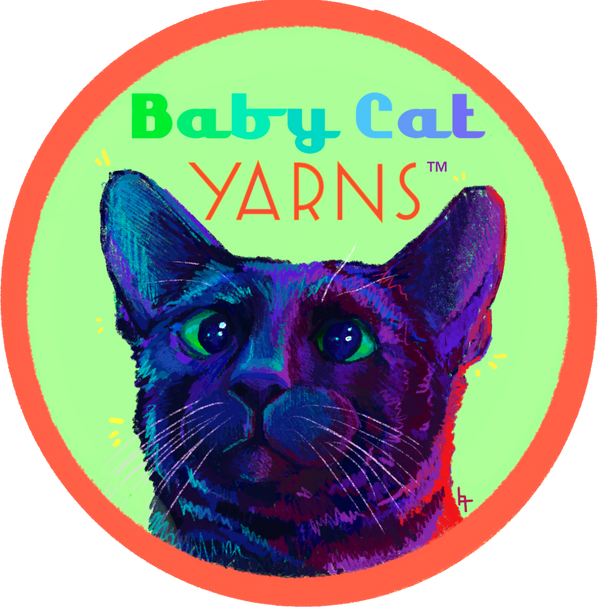Color Language
DUDES! Here are frequently used terms in the shop, so together we can expand *how* we are talking about color. These are by no means dictionary definitions, just my language of how I communicate about color in general terms.
Hue: another word for color. This can be broad (red, blue, gold) or localized (honey, toffee, ochre)
Value: how light or dark a color is (baby blue vs royal blue). We divide things here between "ultra pale" "pale" "midtone" or "medium value" "dark" "super dark" and "darkest." Sometimes I also refer to a value as "deep in value" or "light in value"
Temperature: The warmth or coolness of a hue. A warm red would be nearer to orange (think flame-y warmth!) and a cool red would be nearer to purple (Brrr!) I use this often to further explain hues and where they sit.
Chroma: the *amount* of color, a colorway has-- or simply put its "purity of hue". For example, Agave would be low-chroma mint, whereas a Toothpaste would be higher-chroma mint. In dyeing, this often is determined by how "neutralized" a color is. Neutralized colors are often lower chroma, where pure colors are higher chroma.
Neutralized: here this refers to a color whose intensity I cut with a black or brown to "flatten" a color. Sometimes I will also cross the color wheel to arrive at a neutralized color. So it could be a green, with the edge taken off, like Rye Flour.
Intensity/Key: This can often be confused with chroma (and is sometimes used interchangeably), but it is a little different. Where Chroma tends to refer to a colors purity of hue; Intensity or "Key" refers almost to the synthetic nature of a hue. For example, a carnation pink is lower-key than a hot pink. At a very pale value, carnation pink will lose lose its intensity quickly and lean more toward a neutral, where hot pink will remain really glowy even at a light value. It won't lose its punch.
Staple Neutral: This is how I refer to mixed grays and colors I feel are neither warm or cool. For clarity's sake I try to limit the use of this term to browns, greys, and blacks. But at a light value, low-chroma colors can fall into this category (ie, the entire Calm Palette). "Staple Neutral" is a searchable term here and will lead you to great Main Colors for colorwork. Also great for daily wear.. Staple Neutrals are a makers bread-and-butter, if you will.
Luminousity: This term refers to the "glowy-ness" of a deep value color. These are colors that make my eye buzz, but they usually happen in shadow. This is a painting term, that I try to spill over into my dye work. Rather than adding black to a color to make it darker, I will bolster colors with a nearby hue that will bring a little tension to the color.
Compound Color: Sometimes I will mix a color and "emphasize" it by adding nearby colors on the color wheel. For example, if I want to make a really true, charged blue, maybe I will mix together a few similar blues to create a more complex and truer hue. (Think the entire cool side of Coastal Palette). By pulling back and forth on warm blue and cool blue dyes, I can create a more dimensional color. Compound Colors I often refer to as being "punchy" or "full-bodied" colors.
Complex Color: simply put, a mixed color! For example, instead of using a purple dye for a color like Pressed Lavender, I mix a blue and a purple. This generally creates a more nuanced or dimensional hue. However in this world of dyeing, complex hues usually have a bit more variance! Different dyes act differently in the dye vats so when we create complex colors, we often find ourselves with more tonal/moddled colorways. Beautiful, but for these colorways, check your yardage so I can ensure dye lot consistency!
Retired Color: this isn't a color term, but rather an indicator that the color you are seeing is no longer permanently in our catalogue... it will either be available in 50g Kits or Mini Kits exclusively. If you see this on a listing for a solitary color, grab it while you can! It's not normal for it to be here and will be gone again soon!
